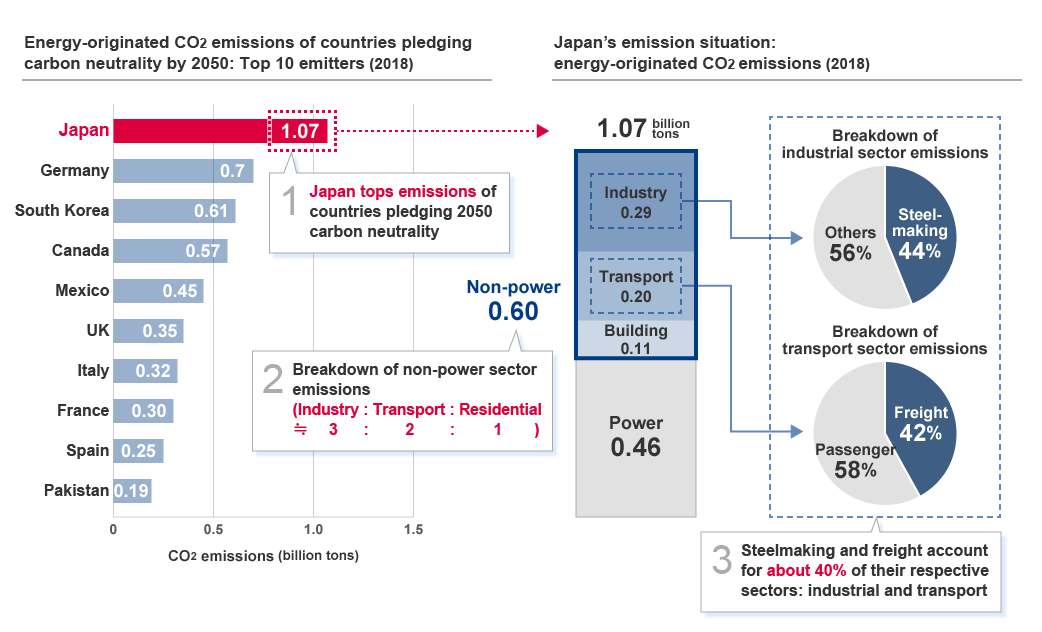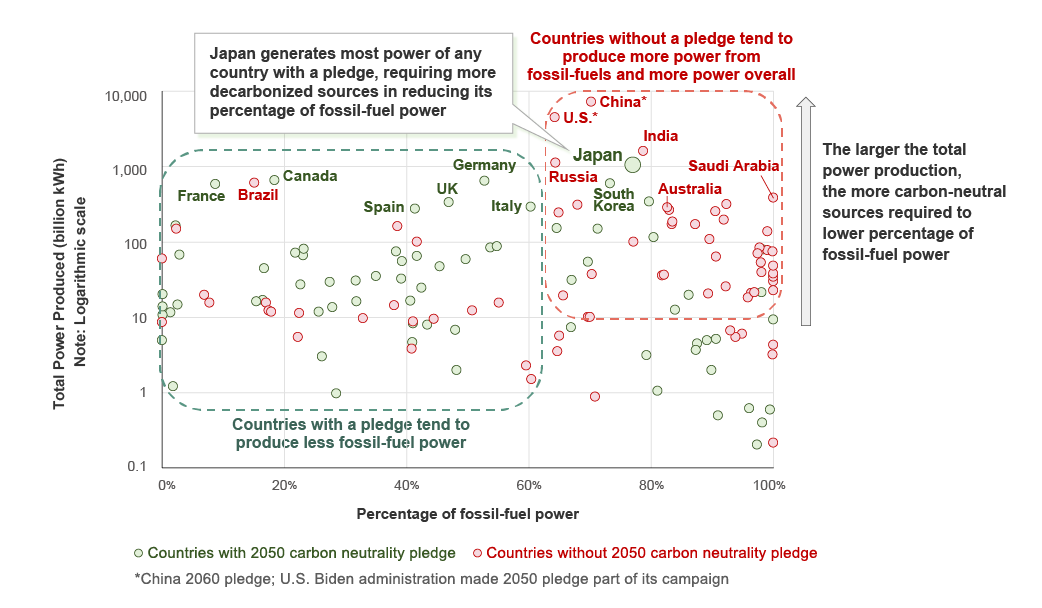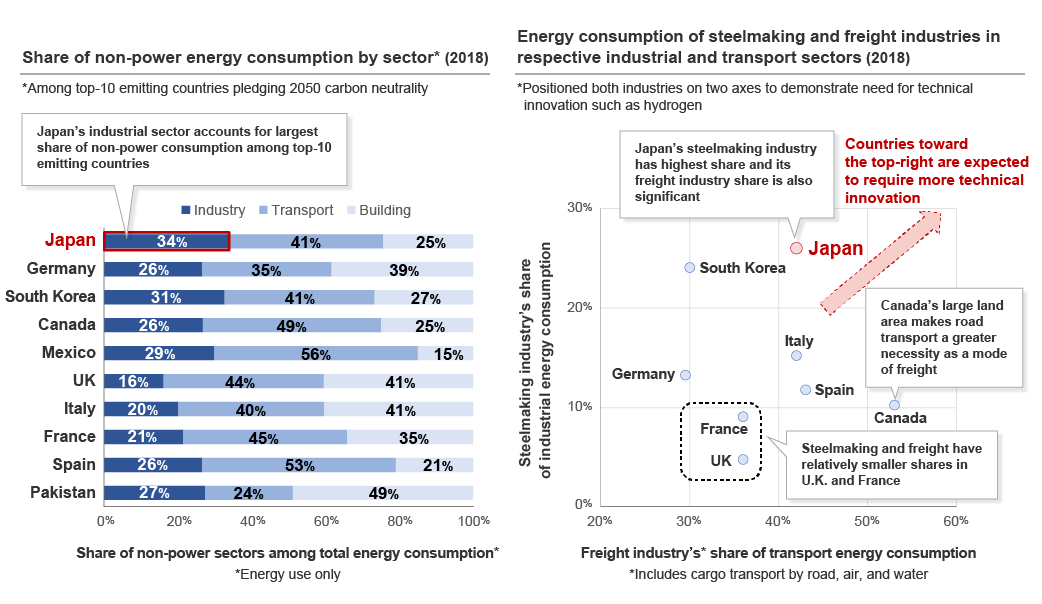Japan’s Starting Point toward Carbon Neutrality
1. Japan has Highest Emissions Among Peers: Around 60% of emissions come from non-power sector

2. Japan Tops 2050 Carbon Neutral Pledge Countries in Total Power Production: Percentage of fossil-fuel power significantly high


3. Japan Has High Ratio of Industries Difficult to Decarbonize: Steelmaking and freight stand out
Reducing emissions will be particularly challenging in certain industries within the industrial sector, specifically steelmaking and freight, the latter including road, air, and water. Hydrogen deployment will be essential in these fields. Japan's steelmaking industry also accounts for the largest share of energy consumption even when compared to the highest-emitting countries. Also, the freight industry's share of the transport sector is on par with that of the other highest-emitting countries. Here too, technical innovation centered on decarbonized fuels will be vital for reducing emissions in Japan's non-power sectors.

1:The EU’s 2050 carbon neutrality pledge was made at the regional level. This analysis examines the issue on a country-by-country basis.
2:International Energy Agency (2021), "Detailed CO2 estimates", IEA CO2 Emissions from Fuel Combustion Statistics (database).
https://doi.org/10.1787/data-00429-en (accessed on 8 January 2021)
3:This analysis covers 144 countries for which IEA statistical data is obtainable.
4:The chart on the right (steelmaking and freight industries’ share of energy consumption in their respective industrial and transport sectors) includes only OECD member countries due to the limitations of IEA statistical data.
5:International Energy Agency (2021), "Extended world energy balances", IEA World Energy Statistics and Balances (database).
https://doi.org/10.1787/data-00513-en (accessed on 8 January 2021)
6:International Energy Agency (2020), “IEA Energy Efficiency Indicators Highlights 2020 edition” IEA Publications.
